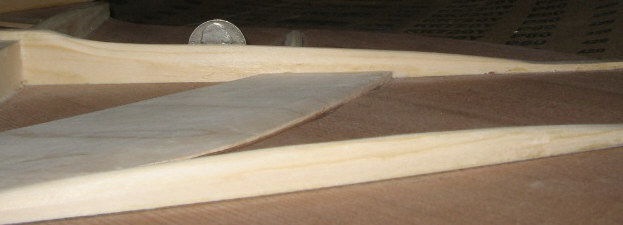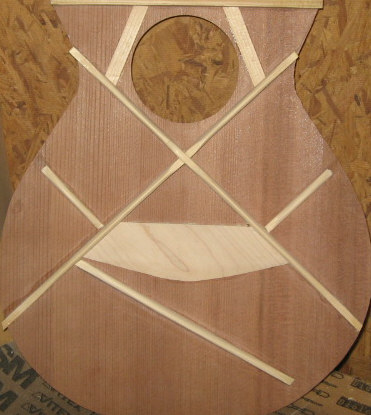Hey Guys,
I’m trying parabolic bracing for the first time and need help deciding if I’ve trimmed enough, too much, or the right amount from my lower x. This is my third guitar, so I haven’t developed an ear for tap tones or the feel for the right amount of flex in a braced top yet. Here are the specs:
Redwood top
Parlor size with a 13 inch lower bout
Bracing width ? inch with a 5/8 inch height at the x tapering to 7/16 at the bridge plate, and then ending at about 3/32 at about an inch away from the side. The 3/32 inch thickness runs about an inch to the side and is tucked into the lining.
Tone bar is 3/8 high at the mid point.
Any suggestions appreciated. Please check out the pics and let me know what you think.
BruceH

